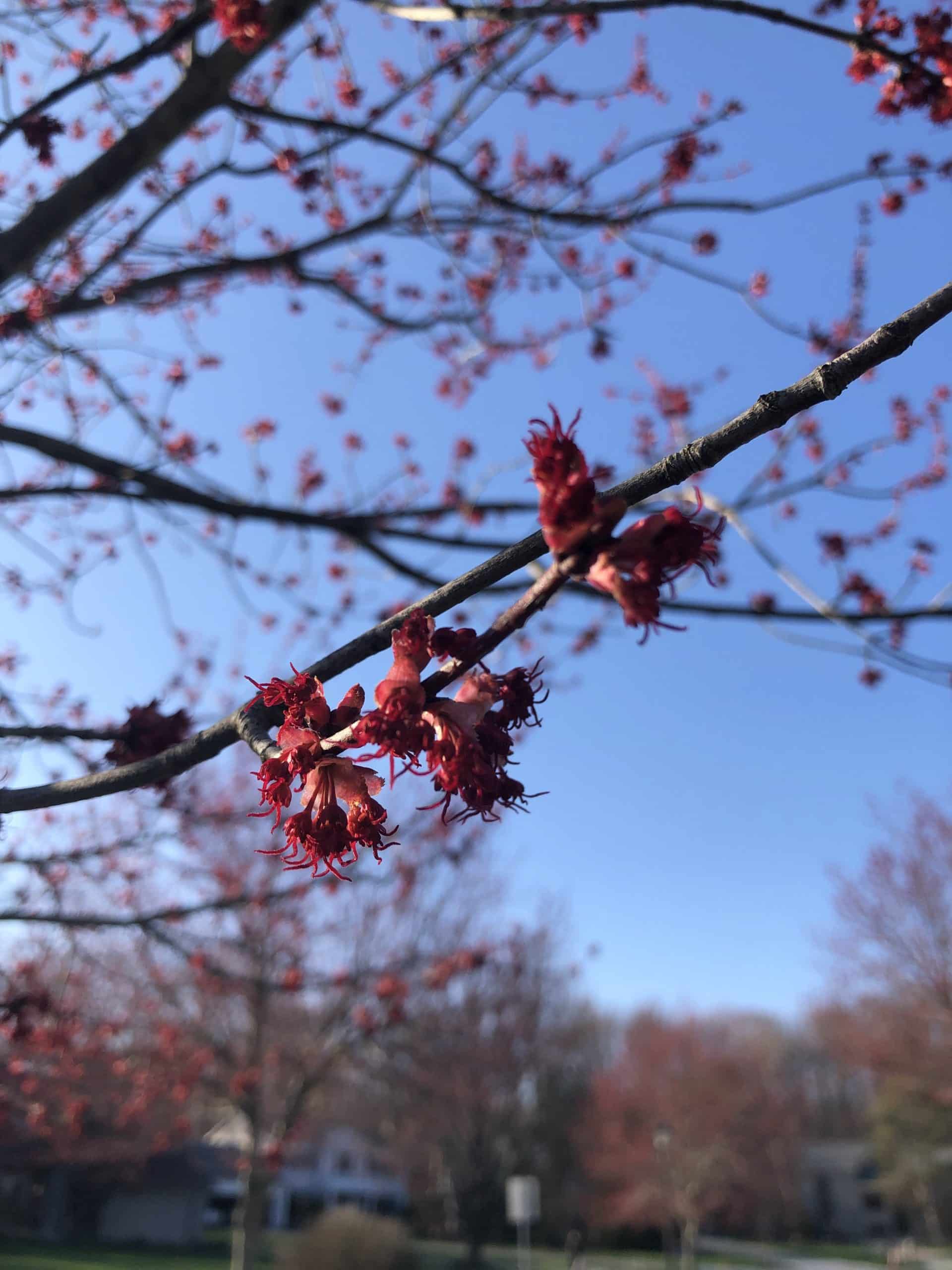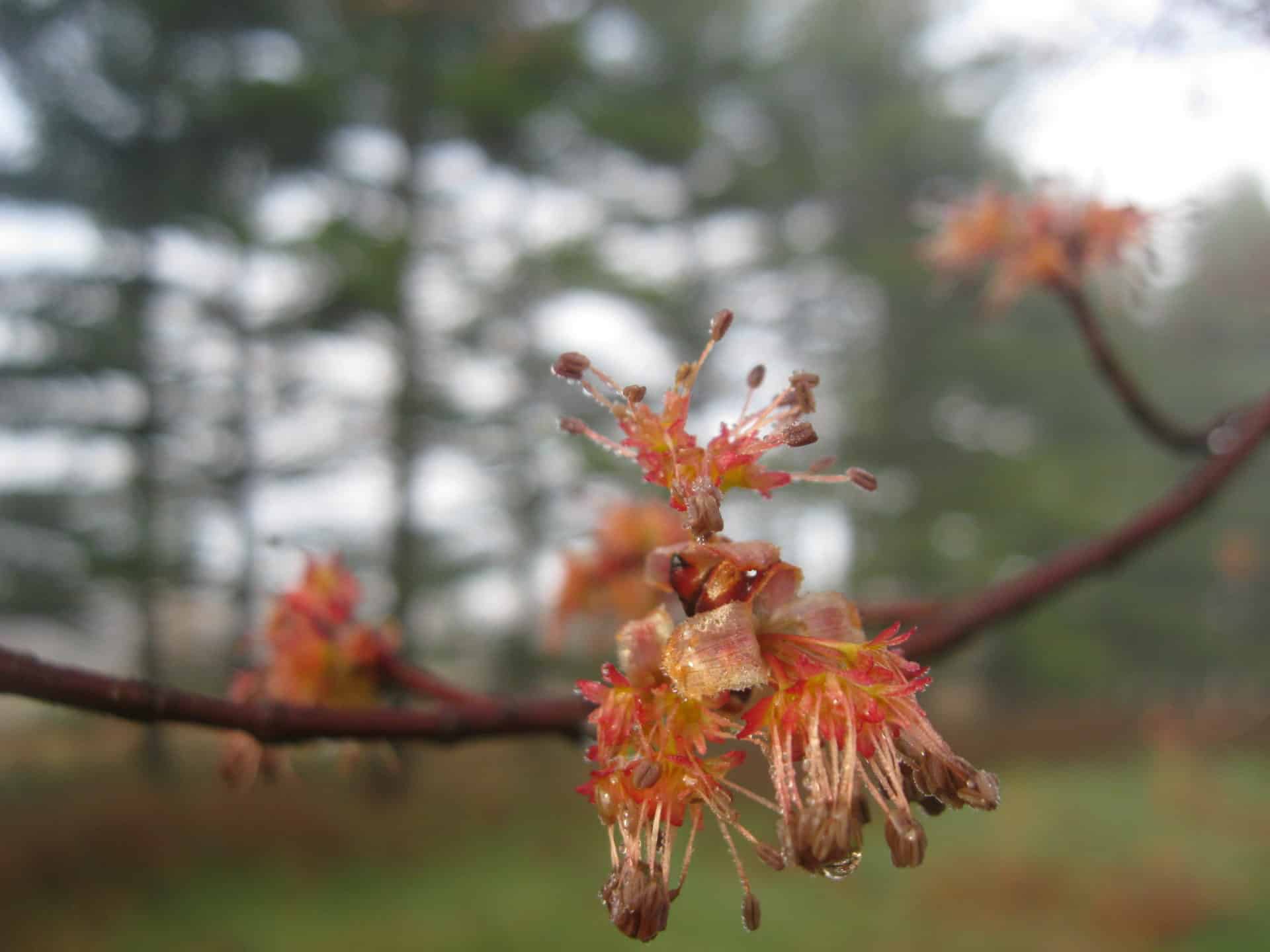Trees
Red maple
Acer rubrum


Red maple provides food for pollinators in early spring. Acer rubrum is the fourth most common tree in the natural areas of The Holden Arboretum, trailing Acer saccharum (sugar maple), Fagus grandifolia (American beech), and Liriodendron tulipifera (tuliptree). It is native from southern Ontario to Newfoundland, south to eastern Texas and just north of Miami, Florida. It has great ecological amplitude from sea level to about 3,000 feet in elevation, growing in a wide range of soil types and habitats from dry ridges to swamps.
One of our more impressive red maples is in the woods south of the deer fence west of Sperry Road on a rise just east of the wetland. It has a height of about 95 feet, a spread of about 48 feet and a diameter at breast height (DBH) of 41 inches. Its age is hard to guess, but it is most likely more than 100 years old given its large trunk and its bark that has shed the shaggy strips that are common on mature red maples.
Red maples provide brilliant fall foliage in our woodlands and cultivated landscapes. Of the 62 red maples planted in Holden’s gardens and fields there are currently 18 cultivars (cultivated varieties) of Acer rubrum in our plant collection including the most commercially successful ‘Red Sunset’. Acer rubrum ‘Red Sunset’ was highly recommended by the Ohio Nursery and Landscape Association’s Plant Selection Committee in 1982. Our specimens average 40 feet in height after 40 years and reward us each October with foliage that simply glows.
Another worthy red maple cultivar at Holden that is commonly available in the nursery trade is ‘October Glory’. Its fall foliage is a deeper red than ‘Red Sunset’ – both are female. One Acer rubrum ‘October Glory’ is located along the exit drive of the parking area. There the soil is usually fairly dry in late summer and as a result the tree turns color anytime between late August and late September and is usually defoliated in mid-October. In contrast an ‘October Glory’ planted in the wet meadow south of the Arborvitae Collection usually starts to turn color in October and defoliates anytime from late October to mid-November.
By Working Woods northeast of the bus drop off are male cultivars including ‘Northfire’, ‘Firedance’, and ‘Autumn Spire’ from Minnesota which show off their fall color in late September and early October. In the Specimen Tree Collection ‘Northfire’ planted in 1992 measured 52’ tall by 35’ wide in 2020 and has displayed its red fall foliage in October.
The flowers of red maple appear in March-April and color the tree a subtle reddish haze. Individual trees are either female, male, or both (monoecious). On monoecious trees male and female flowers usually are separated on different branches and bloom sequentially to avoid self-pollination. By mid to late May seeds are ripe and ready to be carried off by the wind. Seed crops can be so heavy some years on female trees that not much foliage is produced until June.
Ethan Johnson
Plant Records Curator
Light: Full sun to part shade
Site Selection: Open Spaces (Parks/ Lawns), Treelawn or Meridian, Wetlands
Size: 50’-60’ (90’) with a lesser or equal spread
Tolerances: Moist acid soil, adapted to seasonally wet and dry soils
Value: Shade tree with colorful fall foliage



